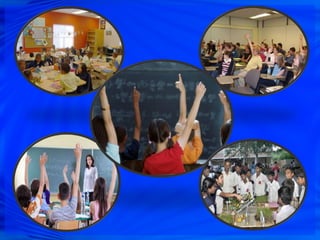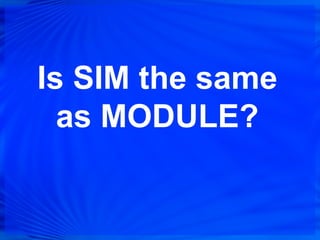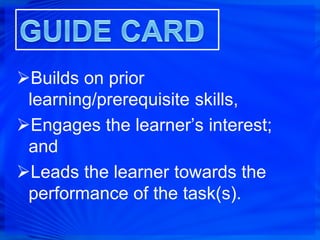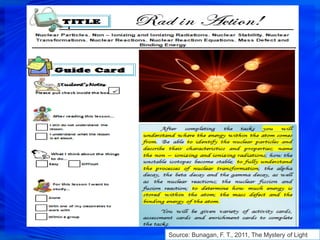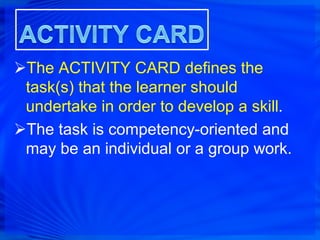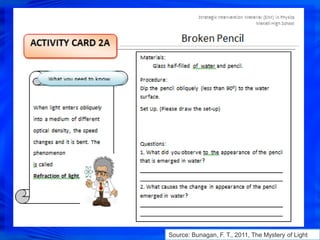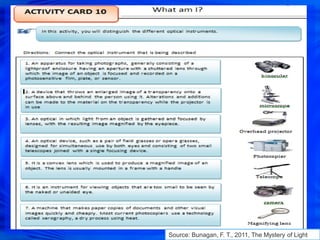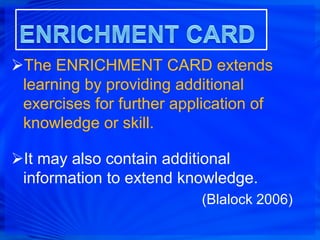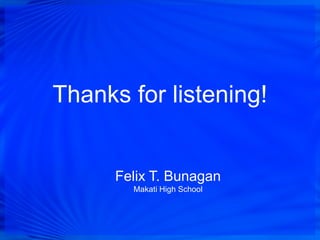Sim talk
- 4. Scene After recording the summative test given, you noticed that most students passed the test but some failed.
- 5. Question: Are you going to proceed to the next topic?
- 8. Strategic Intervention Material an instructional material meant to re-teach the concept(s) and skill(s) (Least Mastered) Material given to the learners to help them master a competency-based skill which they were not able develop during regular classroom teaching.
- 9. SIM consists of both learning strategies (for students) and content enhancement routines (for teachers) Multifaceted approach to help students to become independent and successful learners
- 10. Topic must be accompanied by a STUDY. It requires less teacher supervision. SIM must be easy to REPRODUCE.
- 11. Is SIM the same as MODULE?
- 12. Focuses on the skill May contain different not mastered by the topics included in a students during chapter. regular class Intended for remedial Intended for regular class classroom teaching No pretest and post With pretest and post test test Includes fun activities Includes fun activities
- 13. Do I need SIM in my class? DEFINITELY!!!
- 15. GUIDE CARD ASSESTMENT ACTIVITY CARD CARD Parts of the SIM ENRICHMENT REFERENCE CARD CARD
- 16. The GUIDE CARD presents the big picture, it Gives an overview of the lesson; Presents the focus skill(s);
- 17. Builds on prior learning/prerequisite skills, Engages the learner’s interest; and Leads the learner towards the performance of the task(s).
- 18. Source: Bunagan, F. T., 2011, The Mystery of Light
- 19. Source: Bunagan, F. T., 2011, The Mystery of Light
- 20. The ACTIVITY CARD defines the task(s) that the learner should undertake in order to develop a skill. The task is competency-oriented and may be an individual or a group work.
- 21. • Begin to where the learners are. • Adopt the activity to the learners’ learning style.
- 22. ACTIVITIES should enhance the following skills
- 23. Source: Caliboso, E. L., 2012, Rad in Action
- 24. Source: Caliboso, E. L., 2012, Rad in Action
- 25. Source: Bunagan, F. T., 2011, The Mystery of Light
- 26. Source: Bunagan, F. T., 2011, The Mystery of Light
- 27. Source: Bunagan, F. T., 2011, The Mystery of Light
- 28. Source: Caliboso, E. L., 2012, Rad in Action
- 29. Source: Bunagan, F. T., 2011, The Mystery of Light
- 30. The ASSESTMENT CARD helps the learner measure his/her level of mastery of the skill upon completion of the task(s). Provides exercises, drill or activities that allow students monitor their learning and use feedback about their progress.
- 31. • Formulated in standard test formats to give students practice in test-taking techniques. • The result of the assessment identifies the knowledge/skill(s) that the learner may need to enhance or develop further.
- 35. The ENRICHMENT CARD extends learning by providing additional exercises for further application of knowledge or skill. It may also contain additional information to extend knowledge. (Blalock 2006)
- 38. The REFERENCE CARD provides additional content to the coverage in the textbook. It may also list resources that the learner may refer to for further reading. (Blalock 2006)
- 42. KEY CHECKPOINTS Ensure alignment of activities with tasks/objectives; Keep the activities short and simple and worth the time of the pupils Provide a variety of activities to cater to the diverse learning styles; and
- 43. Provide a number of activities (at least 3 per task) so that the learner can have enough practice in developing skills. The SIM must provide the students the key ideas/concepts. Directions must be clear. The TITLE MUST BE CATHCHY.
- 45. THE LOST SHEEP
- 46. LEAVE NO PUPIL BEHIND
- 47. "Ideal teachers are those who use themselves as bridges over which they invite their students to cross, then having facilitated their crossing, joyfully collapse, encouraging them to create bridges of their own." -- Nikos Kazantzakis
- 48. Thanks for listening! Felix T. Bunagan Makati High School
